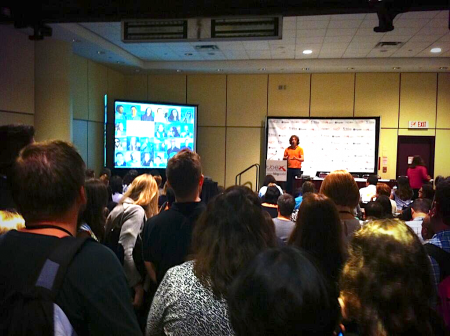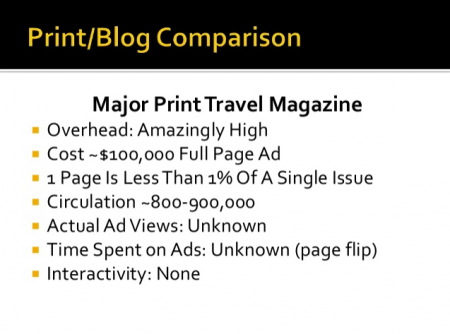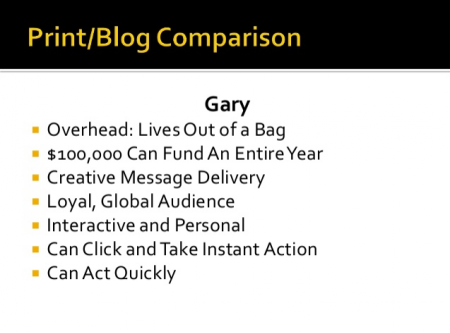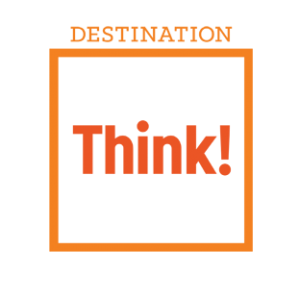The Archives
-
Marketing, social media, Travel & Tourism
5 Lessons learned for bloggers when working with destinations
06.20.13 | Permalink | 4 CommentsA few weeks ago I presented two sessions at TBEX in Toronto. It was a very flattering experience. The room was packed both days, and I received a lot of great feedback from attendees, bloggers, DMOs and tourism businesses. My day 2 presentation became a featured presentation on Slideshare. It was a good week!
On day 1, I shared the lessons we’ve learned at Think! working with bloggers and destinations. At the end, I gave tips for destinations and bloggers that I will now share in two posts.
I’ll start with tips for bloggers.
(These tips are based on your ability to connect with DMOs and the tourism industry. I would never pretend to know how to be a successful travel blogger – that’s your territory. But I do learn a lot by watching how my 2-year-old daughter runs her travel blog travellingwithparents.com.)
1) FIND YOUR NICHE!
If you are a general travel blogger, it’s hard to stand out and create a group of loyal readers. By serving a niche, you have a better chance of reaching people who find your content relevant and passionately care about it. Somebody who loves to ski is more likely to read a ski travel blog. It’s also going to be valuable to people in the ski industry, since you talk to the people they want to talk to. But in order to be taken seriously, you need to able to speak credibly to the community.
Bonus tip: Your story matters too
During the speed dating sessions at TBEX, we talked with more than a hundred bloggers and very few could describe what the story is that they are telling or what niche they serve. Some bloggers “write for themselves” and that’s ok of course. But think about your angle. Is there a thread that runs through your site? How do your posts connect as a whole? “Looking for off-the-beaten-path experiences” or wanting to “emerge myself in the culture” is simply too standard an explanation. Jürgen and Mike’s for91days blog, however is not. It’s a story that’s easy to understand. So is the 365 days of dining in Richmond campaign blog that we helped out with.
2) BUILD A COMMUNITY
A lot of destinations still focus on web traffic as a their primary metric when it comes to selecting bloggers. It’s definitely important, but for us it’s only one out of nine criteria. Bloggers are influencers, and the degree of influence you have over your audience is what matters more. Why? Because we would like you to inspire people to come visit the place you’re writing about. Bloggers who have built a base of loyal readers and who cultivate an engaged social media community are more likely to have a higher degree of influence.
It’s easier to build a community around a niche, because people who share an interest are more likely to engage with each other (see #1). But you can also build a community based on your personality, skill or other quality you have. Whatever the case, you have to connect. It’s called social media for a reason.
3) BE CLEAR ABOUT YOUR APPROACH AND OBJECTIVES
There’s no right or wrong approach about how you travel or how you publish your content, but most destinations approach a blog trip like a traditional press trip. This often leads to a frustrated experience if you don’t like that format. When you’re approached by (or reach out to) a destination, make sure you’re very clear about your standard approach.
Do you prefer not to be hosted? Make sure the organization contacting you knows this. Is the only reason you want to visit, is because of a specific national park? Make sure they know as well. Otherwise you might be frustrated when your host has an action-packed itinerary filled with zoos, museums, restaurant after restaurant and other things you’re not interested in, while allowing you 30 minutes in park you came for in the first place.
Being clear about what you want and like might affect the outcome of whether you will be invited or not. But in the end, it’s better for both you and the destination to discover early if your expectations don’t align.
4) UNDERSTAND THE DESTINATION’S OBJECTIVES AND EXPECTATIONS
Before you commit to a blog trip, make sure you understand what the destination would like as a result. How do they define success? Do they have specific expectations about publishing? Do they expect you to write about specific things? Don’t forget that it’s an investment for them and it’s important to ask these questions up front so you can decide if you can or want to meet them.
We’re not big fans of defining specific publishing requirements. We’d rather let the destination speak for itself and have the blogger decide what and how much is appropriate for their audience. That’s why it’s important that the destination does its homework and invites the right bloggers. When discussing trips with writers, we’ll give bloggers an idea of what we and the client have in mind, including explaining why we’d like to invite them. For example: “we want a ski blogger to experience this new ski resort because we believe your audience would really like to know about it. We’ll leave it up to the you to decide how to best tell that story.”
But more often than not, we’ll think outside the box. We’ll include bloggers as part of a bigger campaign. Because they’re great content producers, storytellers and often live without too many constraints.
5) STAY HUMBLE
I’ve seen some travel writers working for big publications show up for a media trip with a suitcase and massive egos. They can be demanding, unreasonable and obnoxious. What I like about working with bloggers is that their passion is truly for travel and creating great content. That’s what’s got you started and that’s what motivates most of you. You’re all unique and some/most of you are real characters… but the far majority of you are insanely nice people. Please don’t lose that when you become more successful.
Tomorrow: 8 lessons learned for DMOs when working with bloggers
-
social media, Travel & Tourism
The business case for blogtrips in two simple slides
At Think! we love working with bloggers because they are, generally speaking, very passionate and excellent creators of content. We work with dozens of DMOs around the world, helping them arrange blog trips and we involve bloggers in many of our campaigns.
About a month ago I attended the 2012 Digital Tourism Innovation Campus in Barcelona. Gary Arndt from Everything-Everywhere presented. Gary is one of the biggest travel bloggers out there and he’s permanently on the road. Gary laid out the business case for working with bloggers in these two simple slides.
Pretty straight forward isn’t it?
There’s more good info in his full presentation below.
-
leadership, Marketing, social media, Travel & Tourism
I’ve seen the future of travel media
08.30.11 | Permalink | 13 Comments
Steve Keenan, online travel editor from the London Sunday Times summarizes Valencia’s unique approach to a media/blogging famValencia Leads
A few weeks ago the Valencia Tourism Region hosted a blog trip (#blogtripF1) and it could very well be the new standard for DMOs to model their traditional media trips or media fams after. I was fortunate enough to be invited on the trip.
Valencia Tourism invited a mix of traditional journalist, travel bloggers, social media travel, web technology and web design professionals. These people of all ages, with diverse skill-sets and interests where hosted on a four day event centred around Valencia and the Formula One Grand Prix.
It included all the hallmarks of a traditional media trip. Visits to the best restaurants, the top sights, attractions and accommodations. The trip included private guides and behind the scenes tours, all well organized as you can expect from any respectable DMO.
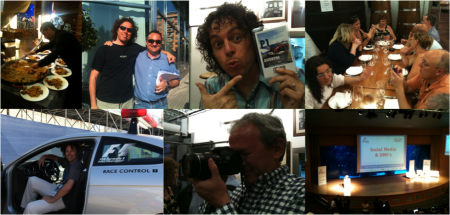
Making the media trip social
Valencia Tourism innovated the traditional trip by creating a place for these professionals to collaborate, discuss, debate and most of all develop new relationships. Social Media professionals are social by definition and unlike traditional journalists who are more driven by exclusivity, bloggers understand their individual success is strengthened by the success of their relationships and their network.Taking advantage of educational opportunities
The place to kick-off the discussion was at a conference where attendees presented a topic related to their area of expertise (videos of presentations here). The event was attended by many local, national DMO’s and operators. A great way to get Tourism Valencia’s stakeholders access to the knowledge in the group.Fostering the creation of networks
Over the next few days we got to know each other very well. There was enough time and opportunity to do so. We discussed and debated all topics digital travel professionals are interested in. And everything was tweeted in real time of course, creating a surge of Valencia exposure in real time, across many people’s personal and professional networks.
Creating remarkable experiences
Remarkable experiences turn into social objects, shared in social media. These are the things worth blogging, tweeting and Facebooking about. There were plenty in Valencia. Walking on top of a shark tank, eating the best Paella, incredibly photogenic modern architecture, random bars, more great food and of course the F1 race.Remarkable experiences was also the subject of my presentation, summarized in this interview
Build in surprises
Exclusive access, or including things money can’t buy will generate even more conversations. The trip offered personalized surprises such as a visit to the F1 paddock, a ride down the track in the safety car and even a drive in a converted 3-seater Formula One car for some.Results
The tally so far? By the last count I’ve heard a while back a few dozen blog posts have been written, 61 YouTube videos created, 363 people tweeted 1,558 tweets reaching over 2 million people all around the world while articles in traditional media are being written.But the real value is not just the immediate exposure but the fact that Valencia sits at the centre of a strong network of travel bloggers and tourism professionals including their expended networks. Valencia will always be top op mind when I connect with any of the new friends I’ve made.
Promoting by focussing on building networks and putting yourself in the middle of it. That’s the future. Valencia has re-invented itself over the last years with new tourism attractions, infrastructure and mega-events. They’re doing the same with destination marketing.
Congratulations Joantxo and Arantxa, you’re setting the new standard for travel media.
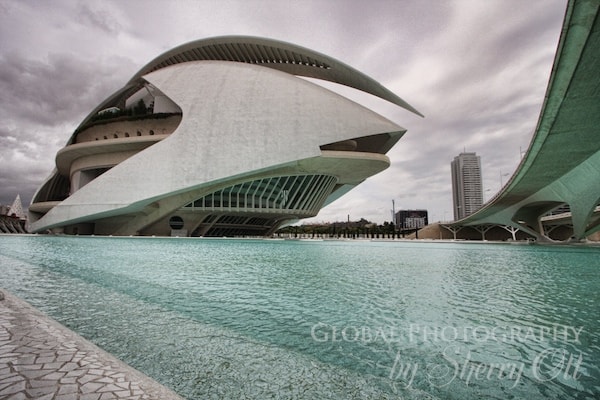
Valencia’s City of Arts and Sciences – Photo by Sherry Ott -
Marketing, social media, Travel & Tourism
Travel Writers vs Travel Bloggers
07.04.11 | Permalink | 4 Comments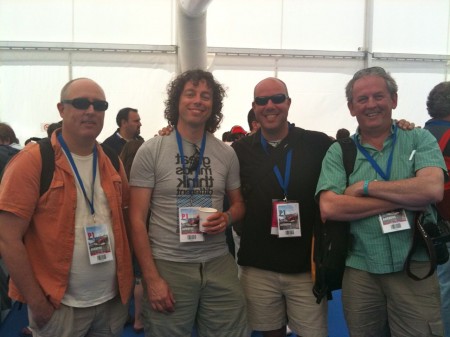
From left to right: Gary Arndt, me, Brooks and Steve Keenan at #blogtripF1
What’s the difference anyways?
A travel writer writes movie scripts, a travel blogger writes TV scripts.That quote comes from Gary Arndt, author of the Everything Everywhere blog. Gary has been traveling around the world since 2007. He has no permanent home. His website receives more visitors than most DMO’s. He has over 100,000 Twitter followers. Gary is the real deal.
A travel writer writes a finished piece. It has a beginning, a middle and an end. On a good travel blog one episode leads to the next and the ongoing story makes the visitor come back over and over again. People are drawn in by the ongoing story.
Awesome.
For more of Gary’s insights, listen to his podcasts about (travel) blogging.
-
Internet, Marketing, tourism bc, Travel & Tourism
Thoughts about Montreal’s ‘army of bloggers to promote the city’
02.10.09 | Permalink | 6 CommentsGreat to see all the attention Montreal gets from their initiative to hire an ‘army of bloggers‘ to promote the city.
Roberto Rocha writes on Canada.comYou also have to wonder just how honest these bloggers will be. Will they relate bad experiences as well as the good? Will they just omit the bad stuff? Being a government agency, Tourisme Montréal will be under a lot more scrutiny than any private body. Since so many restaurants, stores and hotels are stakeholders, it will be interesting to see how they balance authenticity with marketing.Todd Lucier doesn’t agree.
I think Roberto has a point. Of course the bloggers won’t be critical. But that doesn’t mean it can’t be authentic. We’ve been doing something similar for a few months now with our Field Reporters. I’ve explained our strategy to create authenticity in a previous post. Our Field Reporters don’t do anything staged. It’s an experience any tourist could have. That’s why we’ve made it clear we’re behind them and we’ve build a random element into the execution (a recommendation). We have 37 videos to date and they’re wildly successful. Maybe I’ll give them a cellphone next 😉
I think the problem is with the word blogger and the solution is simple. Montreal should call these people something different because the word blogger creates a false expectation. My suggestion is to call them “Montreal Ambassadors” or something, like we did with ‘Field Reporters’. Then you can define the job any way you like.
The idea is great and I hope Montreal is smart enough to allow some room to let the program shape itself. Who knows what will happen when people start phoning; it can go to unexpected (yet wildly successful) places. Like Todd said “it’s all about the stories”.
Update:
Field Reporter Chris says in the comments: The more I do these Field Reporting videos the more I realize the value of being completely spontaneous during a shoot in order to make it authentic. No preparation of what to say… just a start location, talk with people (residents, tourists, event organizers, or even Raccoons!) and see what happens, have fun and cover the moment. -
Internet, Marketing, Travel & Tourism
Hotel ‘behind the scenes’ blog
09.12.08 | Permalink | 4 CommentsI’ve started to incorporate 5 e-marketing tips for tourism operators in my presentations for a while. They were the inspiration for the “Marketing your small tourism business in the 21th century” were based on.
One of my tips is to start a blog. I always envision this blog were an operator can provide some ‘behind the scenes’ info about their property. Introduce the staff, the experience, guest comments, etc. I’m sure every business deals with hilareous moments as well that would be fun (and appropriate) to share.
The Opus Hotel here in Vancouver has an awesome blog, but I’m always looking for something a little less corporate. And I could never find one, until today. The Hawtorne Hotel is a 3 star hotel in Salem, MA. They’ve posted stories about the hotel, its gardens, the town, their staff, guest comments, special menu items from their restaurant since March 2005. In the 3.5 year, they’ve accumulated almost 2000 postings.
I think it’s a great example of using a blog to create a connection with potential visitors. I would suggest to share more stories instead of making announcements. Where people travel, stories happen.Where people work, stories happen. Somebody with a bit of wit can create a great blog that can create a following like a soap opera. People will want to visit the real deal and be part of the story.
Marketing your small tourism business in the 21th century: -
Internet, Marketing, tourism bc
Thanks John from Terrace
I don’t know John from Terrace. But on April 4, 2007 he posted a blog post about the Seven Sisters Mountain Range on HelloBC’s blog. It’s a short paragraph, but contains perfect information and he added a beautiful photo as well. Great for us, great for our website users.
Google indexed the entry and the last month, the term “Seven Sisters Mountain Range” was the 14th most popular keyword driving organic traffic to HelloBC. There are 25 other variations of the keyword driving traffic to the website as well.
Thanks John, and all other HelloBC bloggers. You’re helping us market, and helping travelers plan.
